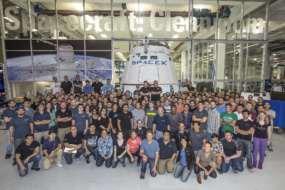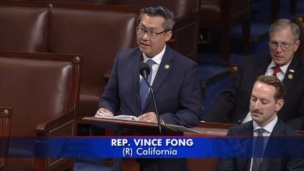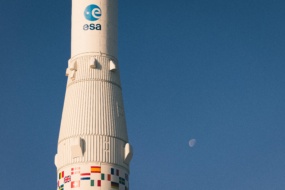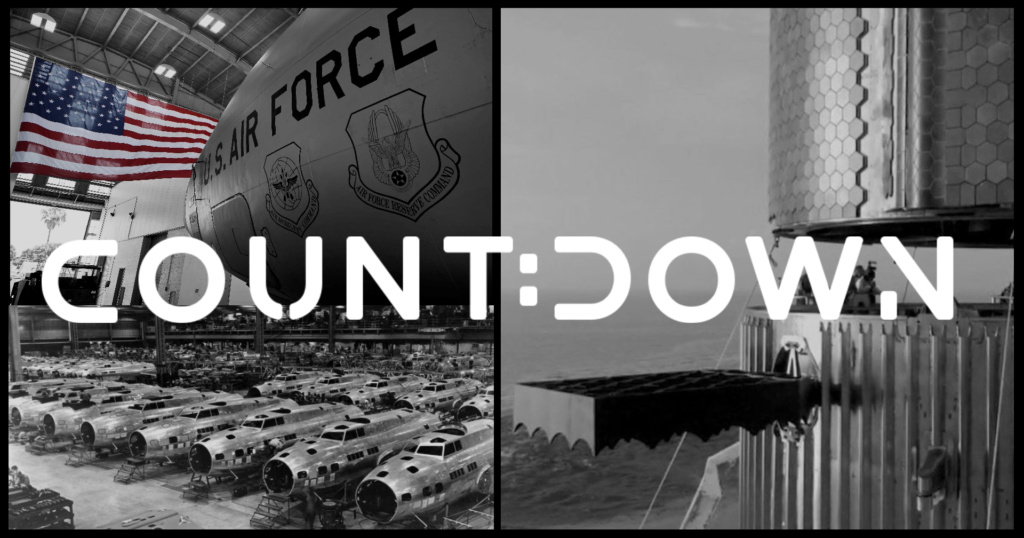
Last week, Miami-based Countdown Capital announced that it had closed a $15M Fund II. Started in late 2020 by Jai Malik, Countdown backs hard tech startups looking to “rebuild the American industrial base.” The firm invests at the pre-seed stage and often writes the first check.
Malik is the founder and a solo GP of Countdown. The firm has a full-time chief of staff, Katerina Jennings, and will hire Ryan Li as a full-time principal in early 2023. Countdown’s average check size is $300,000, though that number will likely rise in the future, Malik told Payload. And the firm’s second vehicle has a 12-year fund life “to accommodate longer timelines for the tech we invest in.”
History: Countdown raised $3M for its first fund back in late 2020 and early 2021. Malik, a first-time fund manager, has backed nine startups, including Hadrian Space. The startup, which is building a new kind of factory for spacecraft, fighter jets, and flying taxis, raised $90M from Lux Capital and Andreessen Horowitz (a16z) earlier this year.
Limited Partners: The LPs for Countdown’s second fund include David Sacks, Lux Capital, Scott Belsky, Hunter Walk, Turner Novak, Ben Marcus, Willy Schlacks, and Eli Dourado. Other backers hold senior engineering and director titles at companies like SpaceX, Malik said, and multiple founders from Countdown’s current portfolio committed capital to its newest fund.
The power of Twitter: Malik said that 25+% “of all the founders we’ve spoken to have originated from or have a significant presence on Twitter.”
Payload caught up with Malik to hear about the new rite of passage in venture capital (moving to Miami), and more seriously, his investment thesis, Countdown’s selectivity and screening criteria, and geopolitical flux. Read about all that and more in the following Q+A, which was edited for clarity and length.
How are you settling into the new Miami digs?
Honestly, I’m loving it, man. I love the great weather, super intellectually curious people, not a lot of traffic here, and good food, so I really cannot complain.
I’ve enjoyed connecting with some of the engineers and entrepreneurs as well, who are in the growing hard tech scene here. So, yeah, all things considered, I’m very excited about it.
And you moved from Ohio, is that right?
I moved from Missouri, actually,
Ahhh, Missouri.
Yes. I was there for quite a while, for three to four years. Definitely a different vibe versus here. I think in Missouri, there were a couple of startups and that was it.
Did living there help shape your investing perspective?
I think it definitely helped personally because Missouri’s cheap compared to everywhere else in the country. And so it certainly lowered the amount of money I needed on a day-to-day basis while raising the fund with zero salary. So from that perspective, it was certainly helpful.
It was also helpful in the sense that we’re trying to invest in companies, close deals, and not be around other people who are thinking about the same things every day. That made it easier to not succumb to groupthink, right? From that perspective, it’s been helpful in order to make investments that I think are truly differentiated.
However, I also did raise my first fund during COVID. While raising my second fund, I was in the process of moving to Miami. And so I can’t really say it impeded my ability to raise capital. Everything was online anyway.
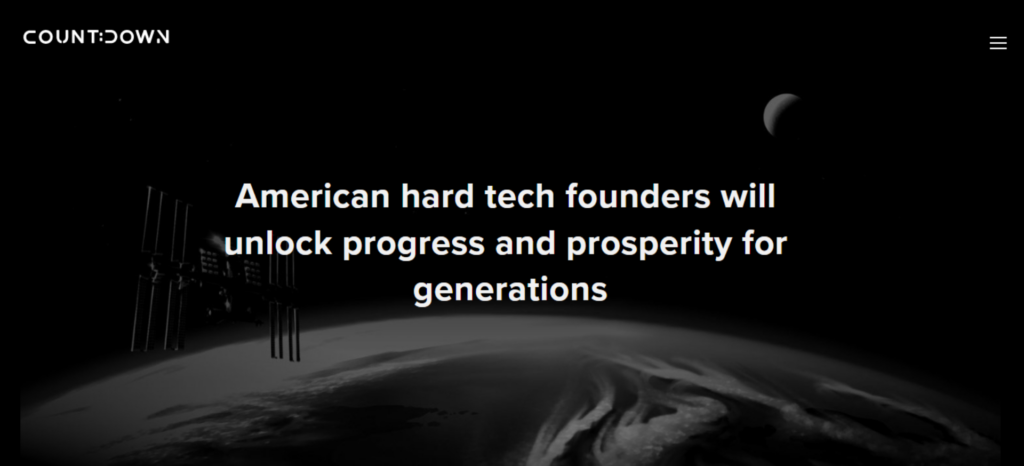
Tell us about Countdown Capital.
At Countdown, we invest in founders rebuilding the industrial base at the earliest stages. For us, this usually means sectors such as manufacturing, defense, aerospace, energy, construction, mining, et cetera, and other heavy industry. Those companies are based here and are doing business here in America, operating headquarters here, and serving, to start, these US customers.
So, uh, safe to say that none of the founders you’re working with are going to be at risk of getting tied up in any CFIUS trouble? [CFIUS = Committee on Foreign Investment in the United States]
That’s right, yeah. So absolutely not. Obviously, by virtue of investing in US-based companies, ITAR compliance is top of mind.
As it relates to geopolitics, what about LPs [limited partners]? What’s your approach, you know, to working with potential LPs overseas?
We have a policy of only taking LP money from folks that reside in nations that are allied with the United States, or have foreign policy objectives that are in line with the United States. To date, we have not and will not ever take money from LPs that are based in China, Russia, Iran, and/or any other nation that has interests orthogonal to the United States.
You probably don’t know this number off the top of your head, but do you know what percentage of capital comes from individuals or institutions based in Five Eyes countries? I’d imagine it’s pretty high. [The Five Eyes refers to an intelligence-sharing alliance between the English-speaking countries of Australia, Canada, New Zealand, the UK, and the US.]
I don’t know the exact percentage, but I can tell you it’s a very, very large proportion. Ed. note: Malik later reached out to say the number is ~ 90%, weighted by capital.
Well, thanks for indulging that, but back to rebuilding the industrial base. Manufacturing, A&D, mining…you see various terms tossed out for these sectors: hard tech, deep tech, frontier tech. What’s your preferred nomenclature? Or does it even matter?
I think terms like deep tech, hard tech, etc. are more talking about the technological innovation that goes into the actual products being built, not the overall markets involved. So, what I like to say usually is that we invest in founders who are rebuilding the American industrial base by solving hard engineering problems.
I generally and genuinely prefer “rebuilding the American industrial base,” because that speaks more centrally to the types of industries we’re investing in. And probably the most important thing, before even getting into technology, in my opinion, is just understanding: what trillion-dollar or billion-dollar markets are you going to go after? And then specifically, what problems will you solve using technology?
In terms of where you sit on the trajectory of company-building, it’s really early. First check in, right, or one of the first?
That’s correct. We aim to be first check as much as possible basically. That technically translates to pre-seed or even pre-incorporation stage. At times, we’ve committed to invest as early as an idea with no company formed yet. So, we’re very, very early.
We are also very thesis- and founder-driven at that stage. We’re only investing in companies that we have conviction in both the founder, as well as the market opportunity.
What does your filtering process look like? How many startups do you have to turn down for each one that gets funded?
We met over 1,000 companies last year. And we will take 20- minute calls from anybody, essentially, that says that they want to build a company in the space or are building one at the stages we’re investing in.
So, we are open to cold outreach, usually. And we will literally speak to anybody, because we find that at the stage that we’re at, we never know what you might come across, right?
But the stats are pretty clear. We talked to 1,000 companies and made nine investments last year.
What models do you use to diligence and assess deals? Because backing companies at this early of a stage, working on hard engineering problems, is a difficult proposition as an investor.
As we talked about over email, you cannot use SaaS or traditional tech metrics for these kinds of things.
Table stakes for us are proven engineering capability on the team, a reasonable chance of scientific feasibility, and skills and personality balance in the founding team. Assuming that those three things are met, the most important things for us are as follows.
The first, and I think the most important, is the secret. What insight or opinion does the founder have that most people haven’t discovered or are not willing to bet on?
Most founders we don’t invest in either hold or articulate opinions for why their company will be successful that you can easily derive from the news or a market research report. There’s rarely any earned insight, either through direct experience, or cold-calling hundreds of people, or just even the willingness to challenge mainstream thought.
The second thing that’s important to us is favorable market dynamics. Not just how big the market is, but like are the actual dynamics of the industry favorable to a certain company? Unlike SaaS, these [markets] are usually very, very big. Manufacturing is hundreds of billions of dollars. So is aerospace, so is defense, et cetera.
The question is: if it’s highly regulated, what is your unfair advantage in getting access in that industry?
If it’s highly oligopolistic, because there are three or four companies like Boeing and Airbus that control the entire industry, why is right now the right time? And why are you the right person? So, it’s a highly localized question.
It requires a lot of understanding about a market that goes far beyond how big something is, and requires a founder to answer the question of why, even if it’s big, you should be doing it.
That’s why we don’t invest in companies.
Other commonalities I’d point to are the dual-use and geopolitical angles. With manufacturing, for example, reshoring has become one of the biggest storylines of the last three years. Any other commonalities?
Yes, I would say other common threads would likely be very capital intensive and hard to recruit talent. It’s usually hard if you’re starting a company to lure somebody out of SpaceX into a startup. So the ability to recruit talent is another thing we look at.
Walk us through your Hadrian investment.
Absolutely. So, I met [founder] Chris Power on Twitter back in December 2020. Twitter is actually where I do a lot of my sourcing for Countdown. We had exchanged a couple of DMs, honestly, that were very friendly and random.
Then, we hopped on a couple of calls after New Years in 2021. Honestly, I was immediately blown away when I got on my first call with Chris, by the level of cold calls and diligence he had done himself to validate how broken precision machining was for aerospace parts.
He walked me through over a number of calls A) the sheer volume of calls that he had done and B) his journey through this. Then, he eventually also demoed a couple of features of the software platform he was planning to build once he got funding. So, from my very first call, I was immediately blown away.
When I was sold was when I talked to a couple of machine shops myself in the Kansas City, Missouri, area, specifically. They validated his thesis, first and foremost. Once I found out directly from people at machine shops how antiquated it was A) to work there and B) interfacing with customers, I committed to invest.
Hadrian’s pitch, in terms of fragmentation of mom-and-pop machining shops, reminds me of your fellow Miami investor Keith Rabois’s tweet about a formula for startup success. Have you seen that?
Yes, yeah, 100%. In fact, we also very much believe that vertical integration is a fantastic strategy for our tech companies, primarily because it lends itself to economies of scale, which is what you need in order to succeed in these kinds of industries.
I often joke in these types of conversations that vertical integration is the final buzzword I needed on my space startup bingo card. But looking at SpaceX and seemingly successful space startups, it does seem like the proof is in the pudding, and that vertical integration is a prerequisite for success.
Yea, I think another really interesting thing that Hadrian has done has vertically integrate atoms and bits. It’s not just the vertical integration of business lines, it’s the vertical integration of technology. You can build a company that’s incorporates both software and hardware without any fancy hardware technology and still be successful — which is powerful.
You formulated this thesis before others had, even if these topics are more zeitgeisty now. How did that happen?
It’s a bit of a long story. The origin story really dates back to my years in college, when I studied business, political economy, and philosophy. By virtue of studying those three things, which are usually very disparate, altogether, it was evident to me really as early as 2014 or 2015 that the tides were changing in our world.
We saw momentum gain for Brexit, and I lived in London during college. We saw annexation of Crimea by Russia, and China hit 10 trillion GDP in 2015.
It was pretty clear to me back then that we were starting to revert back to a historical mean of global power competition and more tactical international trade. In general, I started to see the importance of values, really, at the world stage.
I was pretty confident that in the next ten years we would wake up to a world where globalization and its merits weren’t the dominant economic, geopolitical, and social framework. So, that was my thesis. As early as then, I wrote papers on it in college.
Fast forward to 2020, the year that we started Countdown. I had worked as an early hire at two dual-use startups and saw issues that COVID had brought to light. There were commercial issues, obviously, with disruptions to our supply chain caused by offshoring. And, geopolitically, the troubling nature of having a repressive country like China led by the CCP [Chinese Communist Party] as an emerging world leader.
I thought that the perfect storm had basically arrived. I had a fair amount of experience under my belt at startups. And for the first time in basically my entire lifetime, it was clear to me that people understood both in government and commercially at large and small manufacturers, that priorities had shifted from just “where is the lowest costs of goods?” to more “where is the most secure cost of goods?”
And fast forward to 2022.
I think recent events this year, with Russia and Ukraine and China and Taiwan, have only validated this story. As you mentioned earlier in this interview, nearshoring and reshoring are now very hot topics in the news, but you could have predicted that. As early as 2014 or 2015, it was very clear that economically and geopolitically, there were both domestic and international tailwinds on the horizon.
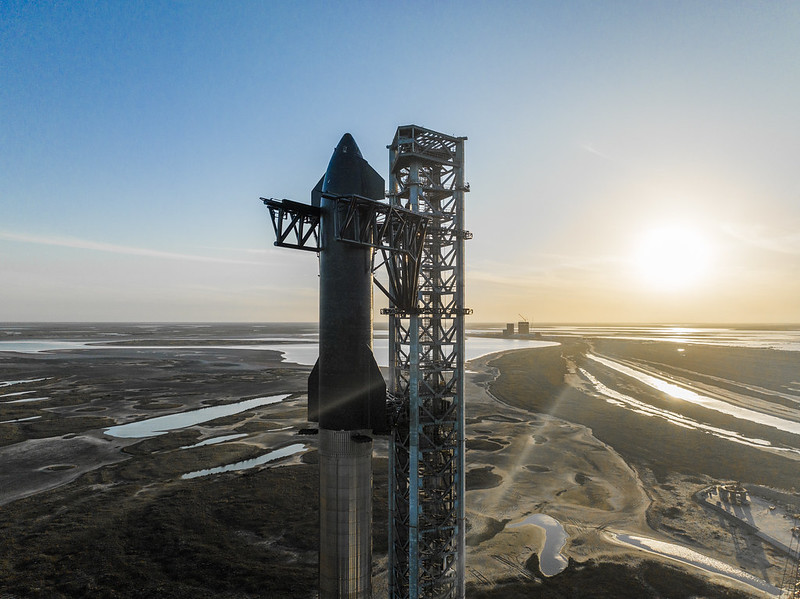
The entire concentration, like 100%, of leaving advanced node chipmaking on an island 100 miles off the coast of China strikes me as another flashing alarm that should have set off tripwires in the 2010s. Anyways, to bring this back to Payload, how are you feeling about the future of space?
Short term bearish, long term bullish. We didn’t make a single investment in new space in 2021, apart from Hadrian, which I consider more manufacturing. The SPAC craze was fresh and valuations were high.
We also felt that many ideas without any bearing to real customer interest or needs were getting funded. But in 2022, we’ve changed that position. This year, we’ve made a couple of space investments and we’re starting to get our feet wet in the space, pun intended, as we return back to reality.
We’re long term bullish for a couple of reasons: First, we believe that it’s a matter of when, not if that SpaceX has a successful Starship launch. The second is that we believe that wars will be fought and won by space-faring nations with space assets. Taking those two things together, I think there will be a whole universe of technologies and use cases that will open up in the next decade.
Right now, we’re taking a deep dive as a firm into what a post-Starship world looks like. We generally think that the industry is going to be inherently rich with companies and teams building a new ecosystem beyond launch. We are also very excited about the potential of software to digitize operations and hardware testing and development.
We’d be remiss to not cover the occasion for this conversation. What was the process of raising the second fund, versus the first?
Fund two was dramatically simpler than fund one. For fund one, we started our raise in December 2020 and concluded it in April 2021. It was roughly a four to five month raise, and also took a lot of time before December to refine the thesis, get some initial meetings going, and make our first couple of investments.
It was certainly more chaotic and a longer process than fund two, because we already had a track record, with investment in companies that frankly did pretty well last year, both in terms of follow-on financing as well as bare fundamentals and revenue generation
It was relatively easy and took us around six weeks to raise most of fund two. And honestly, the pitch was very simple: here’s our thesis. Here are our returns. This is why you should invest. It’s a thesis that’s both geopolitically important and more commercially viable than ever before.
